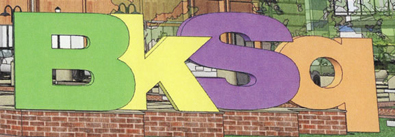Jonathan Revtai |
Construction Management |
 |
|

Building 1 at Bakery Square |
Pittsburgh, PA |
|
|
|
|
Reflection |
ABET Outcomes for AE 481/482 |
Outcome not able to be assessed
(Score of 0) |
Level of ability demostrated but below acceptable
(Score of 1) |
Minimum acceptable level of ability demonstrated
(Score of 2) |
More than minimum level of ability demonstrated
(Score of 3) |
A. An ability to apply knowledge of mathematics, science, and engineering |
|
|
|
X |
B. An ability to analyze and interpret data |
|
|
|
X |
C. An ability to design a system, component, or process to meet desired needs |
|
|
|
X |
D. An ability to identify, formulate, and solve engineering problems |
|
|
|
X |
E. An understanding of professional and ethical responsibility |
|
|
|
X |
F. An ability to communicate effectively |
|
|
|
X |
G. The broad education necessary to understand the impact of engineering solutions in a global and societal context |
|
|
X |
|
H. An ability to engage in life-long learning |
|
|
|
X |
I. A knowledge of contemporary issues |
|
|
X |
|
J. An ability to use the techniques, skills, and modern engineering tools necessary for engineering practice |
|
|
|
X |
K. Engineering design capabilities in at least two (2) of the (3) basic curriculum areas of architectural engineering, and the design has been integrate across the breadth of the program |
|
|
|
X |
L. Communication and interaction with other design professionals in the execution of building projects |
|
|
|
X |
|
AE 481W & AE 897
The combination of these classes over the past year proved to be very important in my learning experience at Penn State. In thesis I was forced to apply many of the lessons taught in architectural engineering while dealing with real world problems. This will greatly help me while trying to aclimate myself in my new job. The first semester in AE 481W was a good starting point for the process that eased me into a better understanding of the project at Bakery Square. The AE 897 class which combined graduate level understanding developeded the information I gathered in the previous semester into four research topics, which I was able to succesfully analyze.
CPEP
The CPEP portion of the course was of great benefit and was interesting for me to learn how develop a website. It was a very creative way for me to keep my information up to date. I was also able to work on my thesis in multiple locations without any files because I could always refer back to everything that was previously posted online. The website I created was a good way for me to share my research and technical assignments with future employers, friends, and family members. |
The Capstone Project Electronic Portfolio (CPEP) is a web-based project and information center. It contains material produced for a year-long Senior Thesis class. Its purpose, in addition to providing central storage of individual assignments, is to foster communication and collaboration between student, faculty consultant, course instructors, and industry consultants. This website is dedicated to the research and analysis conducted via guidelines provided by the Department of Architectural Engineering. For an explanation of this capstone design course and its requirements click here. |
|
|
|
|
| Note: While great efforts have been taken to provide accurate and complete information on the pages of CPEP, please be aware that the information contained herewith is considered a work-in-progress for this thesis project. Modifications and changes related to the original building designs and construction methodologies for this senior thesis project are solely the interpretation of Jonathan Revtai. Changes and discrepancies in no way imply that the original design contained errors or was flawed. Differing assumptions, code references, requirements, and methodologies have been incorporated into this thesis project; therefore, investigation results may vary from the original design. |
|

